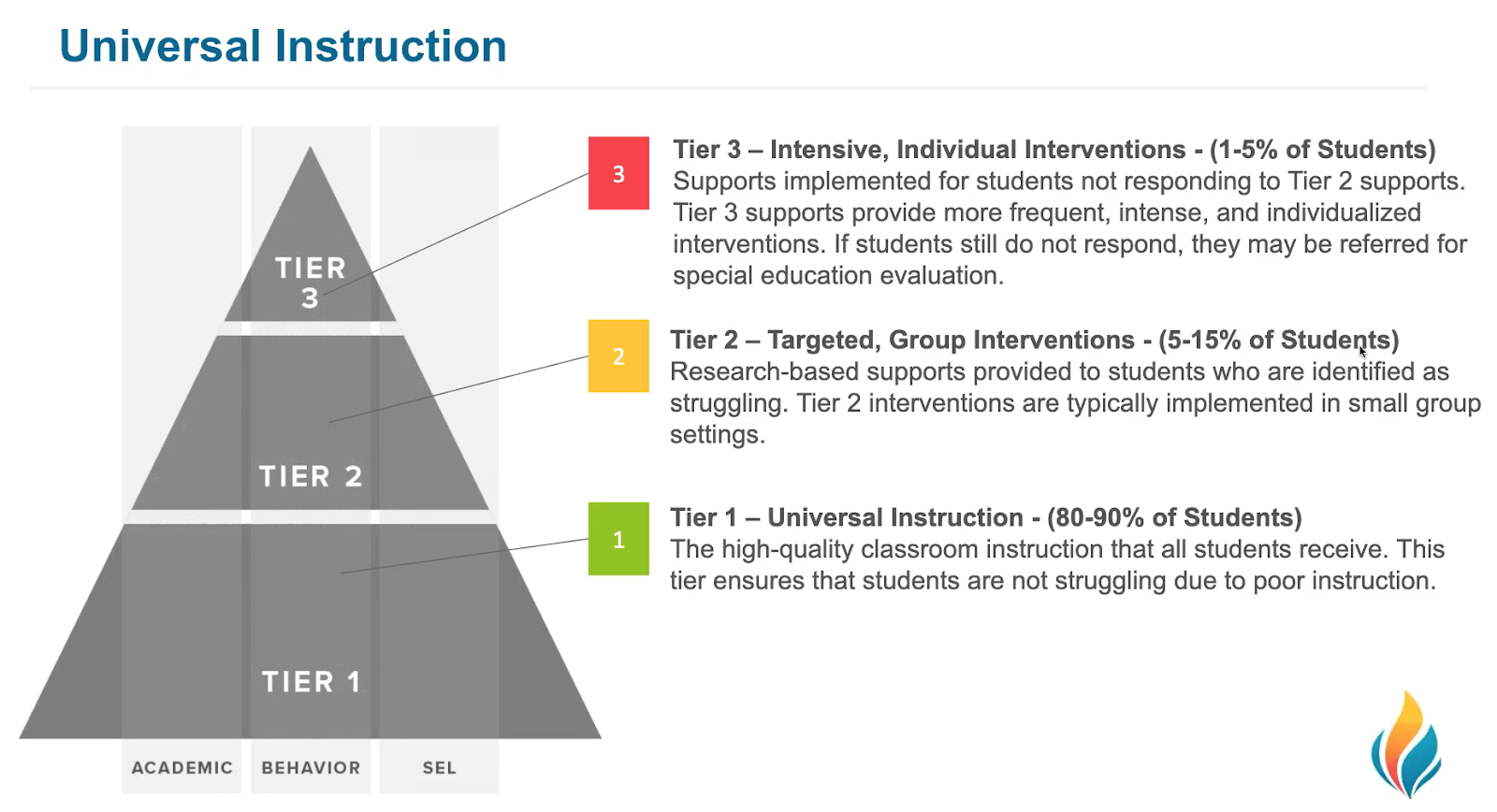By: Yvette Arañas
Many schools and districts have implemented a Multi-Tiered System of Supports (MTSS, formally known as Response to Intervention), which involves data-based problem solving to guide decisions for instruction and interventions. MTSS provides evidence-based practices to help students succeed at all levels of instruction. Effective implementation of an MTSS requires collecting reliable and accurate data and interpreting the data to make meaningful changes to instruction and evaluate interventions at each tier. To make sure that a school is collecting high quality data, it is important to make sure that high quality assessments are being used.
FastBridge Learning provides many evidence-based assessments that can help support an MTSS framework. FastBridge Learning also facilitates the implementation of an MTSS by providing graphs to help educators interpret data and make decisions based on the data, and automating reports that can guide instruction. Below are explanations for how FastBridge Learning assessments can be used at different levels of support.
Tier 1: This tier is often referred to as the universal level because the interventions and assessments at this level apply to all students. Tier 1 instruction is expected to successfully help about 80% of students meet grade-level expectations. Because some students may need additional support, it is important to screen for students who have academic and behavioral difficulties. Ideally, screeners should be quick to administer, reliable, and accurate in identifying struggling students.
For reading, FastBridge Learning has screeners such as earlyReading (for grades PreK-1), CBMreading (grades 1-8), AUTOreading (grades K-12), and aReading (grades K-12). Math screeners include earlyMath (grades PreK-1), CBMmath (grades 1-6), and aMath (grades K-8). For behavior, FastBridge Learning has the Social, Academic, and Emotional Behavior Risk Screener (SAEBRS) for K-12. FastBridge Learning also has the DevMilestones rating scale, which can be used to assess kindergartners’ skills for language, cognitive development, socio-emotional development, and motor skills. FastBridge Learning also provides benchmarks so teachers can see what scores their students should have to meet grade-level expectations. Group reports are available to help teachers identify students who are at high risk and some risk for falling behind their peers at the national, local, school, and classroom levels.
Tier 2: Students might be identified to receive interventions at the Tier 2 level when the data show that they do not respond effectively to core instruction at the Tier 1 level. Tier 2 interventions are targeted to meet individual needs and intended to supplement Tier 1 core instruction. Tier 2 interventions are usually implemented in small-group settings. These interventions are expected to help struggling students catch up to their peers and should be evaluated frequently to determine whether they are helping these students improve. About 15% of students are expected to meet grade-level expectations with the help of Tier 2 support.
Within the FastBridge system, earlyReading, AUTOreading, CBMreading, CBMcomprehension, earlyMath, CBMmath, and SAEBRS currently are available to use as progress monitoring tools, which can help teachers determine whether their students are meeting their goals. Graphs are also automatically generated for each student who is being monitored, which can help teachers and data teams decide whether or not an intervention is working for a student. To make sure that Tier 2 interventions are targeted to meet students’ needs, teachers also can look at their students’ individualized reports to see which skills have been mastered and which ones still require support.
Tier 3: There are a few students (about 5%) who still might not meet grade-level expectations after receiving Tier 2 services. These students would receive Tier 3 support, which includes very intensive interventions that are often provided to one individual student at a time. Note that special education can be included in this tier, although tier 3 is not necessarily synonymous with special education.
The same FastBridge Learning tools that were described for Tier 2 can be applied to Tier 3 as well. The progress monitoring graphs provided by FAST also give teachers the option to adjust students’ goals. In addition, several of the reports show an inventory of mastered skills and graphs for students’ errors, which can help Tier 3 interventionists refine interventions.
As schools develop tiered supports to meet the needs of all students, they will need universal screening and progress monitoring assessments to show which students need assistance and whether interventions are working. FastBridge Learning offers a number of assessments that meet these needs. Importantly, all FastBridge Learning assessments are designed to be used within a team-based problem-solving model that considers multiple methods and sources of information about student performance. With the right assessments and interventions in place, an MTSS is likely to help schools meet the needs of most students.
Yvette Arañas is a doctoral student at the University of Minnesota. She was a part of FastBridge Learning’s research team for four years and contributed to developing the FAST™ reading assessments. Yvette is currently completing an internship in school psychology at a rural district in Minnesota.







